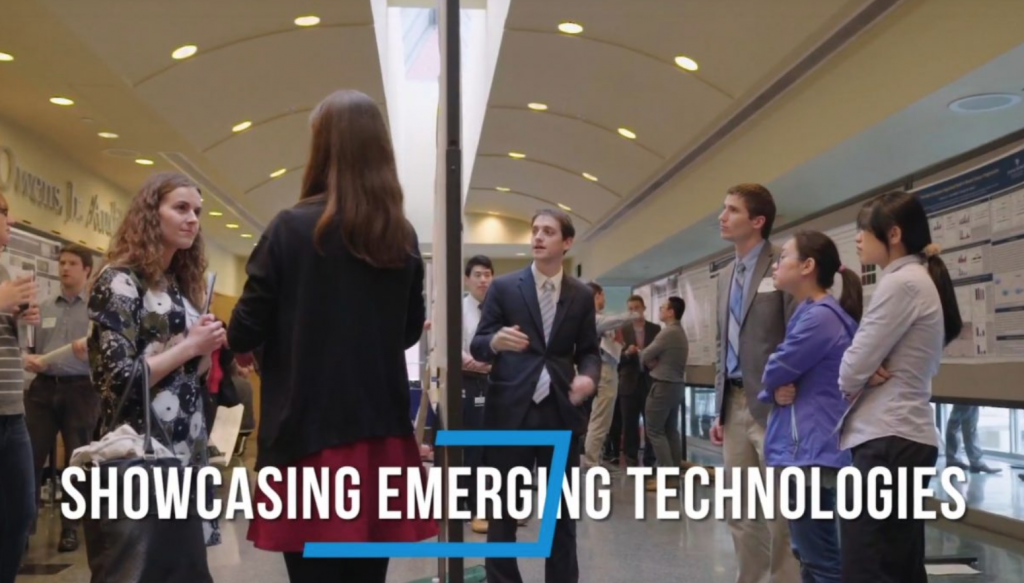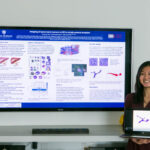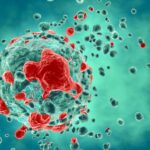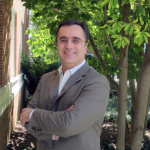Highlights of the 11th Annual Nano-Bio Symposium: Engineering Vascularization

Blood vessels play a dual role in healing as well as spreading diseases in the body. While vascular systems carry vital nutrients, they are also a pathway for malignancies to infiltrate other body systems. The challenge for researchers is encouraging blood vessel formation in one instance, while inhibiting formation in another. Such was the theme of the 11th annual Johns Hopkins Nano-Bio Symposium, Engineering Vascularization, on Friday, May 5, 2017 at the Johns Hopkins School of Medicine. The symposium was jointly organized by Johns Hopkins Institute for NanoBioTechnology (INBT) and Physical Sciences-Oncology Center (PS-OC).
Despite the copious amount of rain throughout the day, about 125 people attended the event. The speakers represent some of the best leaders in their field at Cornell, Tufts, University of California San Diego, and Johns Hopkins University. They discussed a few of the latest advancements in the basic sciences and translational investigation.
Symposium talks
David Cheresh, “Reprogramming the Endothelium: An Initial Step in the Process of Angiogenesis”
Zaver Bhujwalla, “Imaging to Navigate the Tumor Microenvironment”
Shahin Rafii, “Angiocrine Functions of Organotypic Endothelium in Regeneration and Tumorigenesis.”
Warren Grayson, “Platform Technologies for Engineering Vascularized Tissue Grafts”
Narutoshi Hibino, “Challenges to Cardiovascular Disease Using 3D Printing and Tissue Engineering”
David Kaplan,“Strategies for Vascularization of Biomaterial Systems for Tissue Regeneration.”
The event also featured 60 posters from student and post-doctoral fellows from labs across the Johns Hopkins community. Their research covered areas such as cell density patterns, the quantifying and sizing of biomolecules, and the mechanical regulation of cell volume. As students stepped into their roles as both curious scholars and lead investigators, the halls buzzed with discussions about the current status and future possibilities of nanobio research.
The symposium not only aims to highlight recent advancements and new areas of research, but to foster meaningful discussions across disciplines. “It’s an opportunity for the labs to spend time with each other and catch up on what progress neighboring labs have made,” said Sarah Kim, fourth-year PhD in biophysics. For those in the industry sector, they can witness firsthand the impact of their work. “We make research tools, and it’s always really refreshing to see what people are actually doing with them,” said Matt Dallas from ThermoFisher Scientific.
The yearly symposium is a reminder of the importance of sharing discoveries in nanobio research. “Research at the interface of biotechnology and medicine has and continues to make great advances, but the field still has many challenges. That is why we need the collective forces of those in academics, clinics, industry, and government to work together on interdisciplinary challenges. INBT is passionate about these collaborations and advancements and this is why we continue to host this symposium,” said Sharon Gerecht, director of the Johns Hopkins Institute for NanoBioTechnology, Kent Gordon Croft Investment Management Faculty Scholar, and professor in the Department of Chemical and Biomolecular Engineering.
By Gina Wadas and Rachel Wallach
Latest Posts
-
 Q&A with PSON Intern Jocelyn Hsu
August 19, 2021
Q&A with PSON Intern Jocelyn Hsu
August 19, 2021
-
 Start Up Founders from Johns Hopkins Aim to Stop Spread of Cancer
August 3, 2021
Start Up Founders from Johns Hopkins Aim to Stop Spread of Cancer
August 3, 2021
-
 Protein Appears to Prevent Tumor Cells from Spreading Via Blood Vessels
July 15, 2021
Protein Appears to Prevent Tumor Cells from Spreading Via Blood Vessels
July 15, 2021


